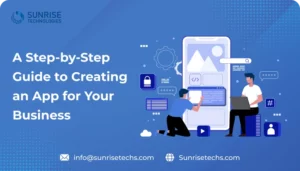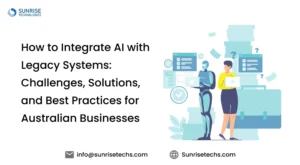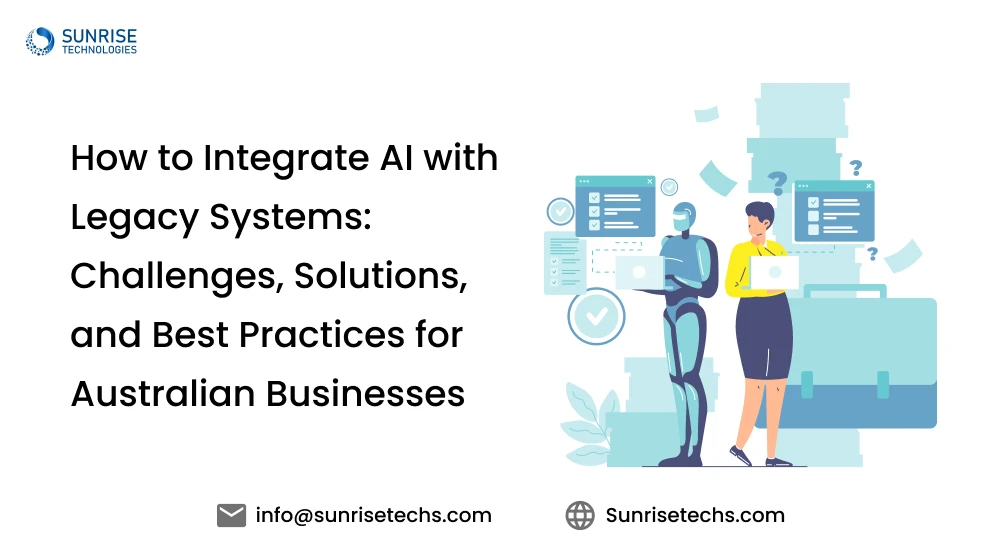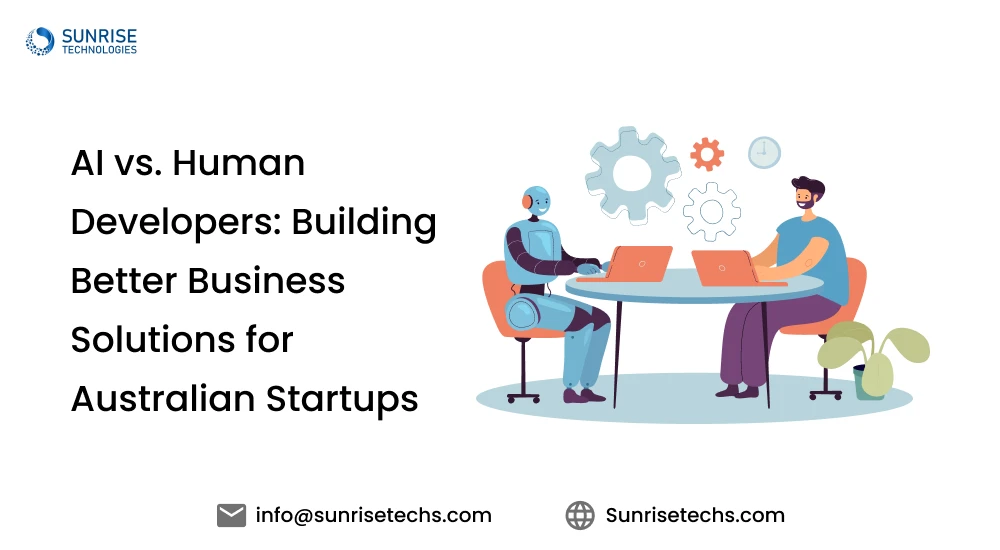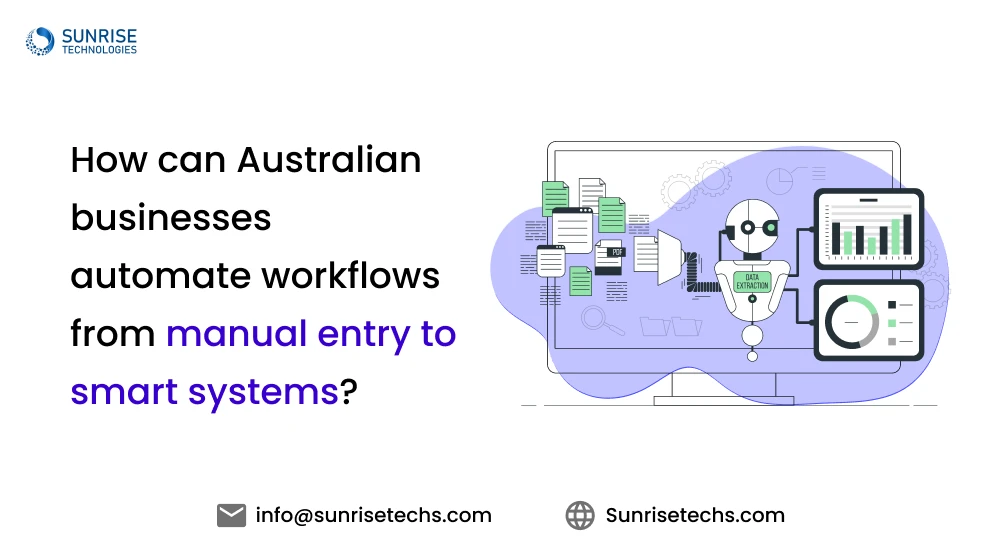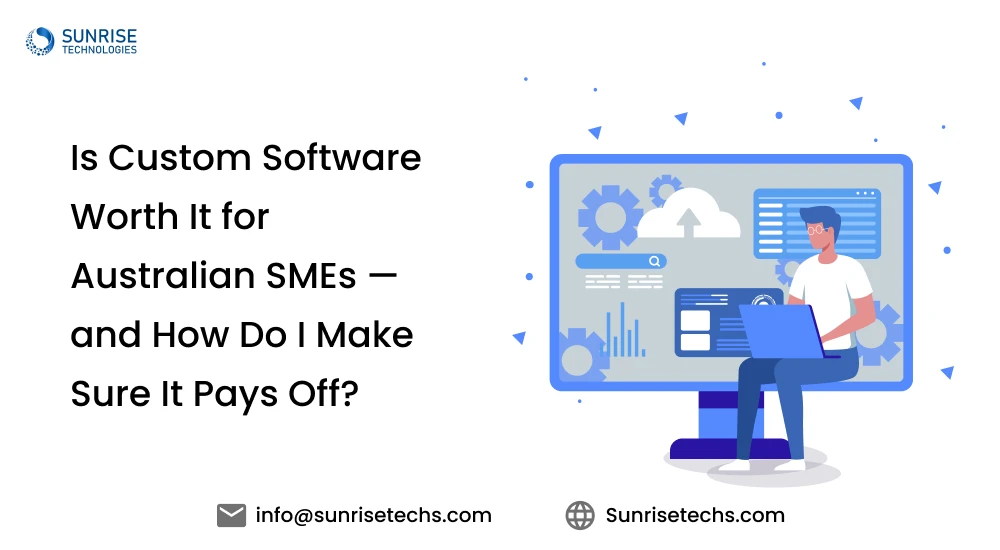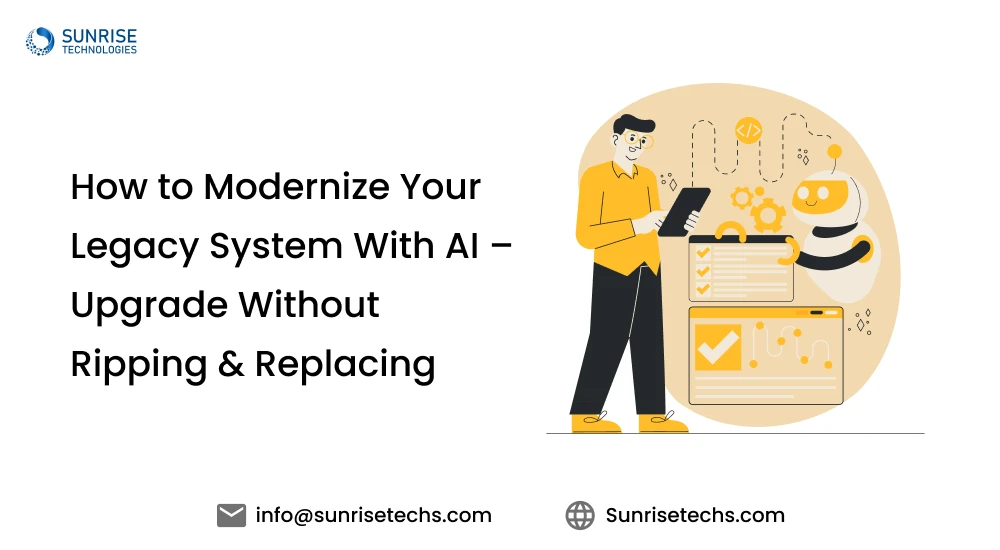
How to Modernize Your Legacy System With AI – Upgrade Without Ripping & Replacing
Oct 7, 2025
In the fast-evolving digital landscape, many Australian businesses rely on legacy systems—software that has served them faithfully for years but is now slowing growth, limiting innovation, and increasing operational costs. The thought of completely replacing these systems can feel daunting and expensive. But what if there’s a smarter way?. Let’s face it—legacy systems are like old buildings. They’ve got strong foundations, but they weren’t built with smart lighting, automated climate control, or voice-activated locks. That’s where AI comes in. At Sunrise Technologies, we believe in reviving, not replacing. You don’t need to bulldoze your legacy software. You need to upgrade your legacy system with AI—layering intelligence, automation, and agility on top of what already works.
With AI-powered app development services and modernization strategies, businesses can update legacy apps with AI, enhance functionality, and integrate intelligence into workflows—without a full rip-and-replace. This isn’t just about technology—it’s about transforming the way you operate while preserving the value of your existing systems. This blog is your roadmap to doing just that. Whether you’re running a decades-old CRM, ERP, or custom-built database, we’ll show you how to modernize it with AI—without the drama of a full rebuild.
Why Legacy Systems Are Holding Businesses Back
Many organizations still run on software built a decade or more ago. While these systems were robust in their time, they now struggle to meet modern business needs.
Common challenges include:
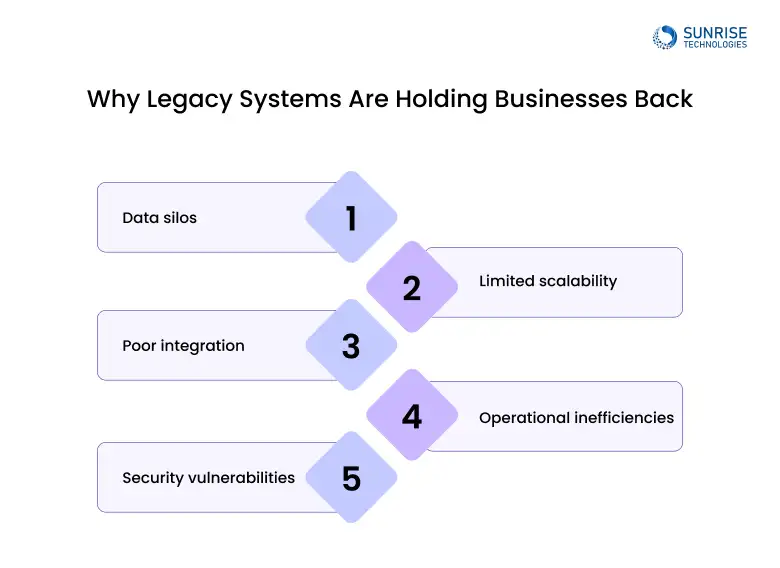
- Data silos: Different departments maintain separate databases, making real-time collaboration difficult.
- Limited scalability: Old architectures can’t efficiently handle growth or modern user expectations.
- Poor integration: Legacy systems often struggle to connect with new tools, APIs, and cloud platforms.
- Operational inefficiencies: Manual workarounds, delayed reporting, and repetitive tasks slow down the business.
- Security vulnerabilities: Outdated systems are more prone to breaches and compliance issues.
These pain points often push companies to consider app modernization services or AI-driven solutions. The good news is, modernization doesn’t always require discarding what works—it’s about upgrading smartly with AI.
Wondering how much it costs to modernize your legacy app with AI? Get a detailed estimate tailored to your business needs. No guesswork, just clarity.
Can Legacy Systems Leverage AI Without a Complete Overhaul?
Absolutely. Modern AI tools are designed to integrate with existing software architectures. Even a decades-old system can benefit from:
- Predictive analytics: AI can forecast demand, detect anomalies, and highlight trends using historical data, even if your software is older.
- Workflow automation: Routine tasks like approvals, reporting, and inventory updates can be automated through AI agents.
- Enhanced decision-making: Real-time dashboards connected to legacy databases allow managers to make informed decisions faster.
For instance, a healthcare clinic in Sydney used AI modules to analyze patient appointment trends and staff allocation without rewriting its entire patient management software.
Result? Improved efficiency and fewer missed appointments.
How AI Modernization Works Without Ripping and Replacing?
Modernizing a legacy system doesn’t mean starting from scratch. Several approaches allow businesses to upgrade legacy systems with AI:
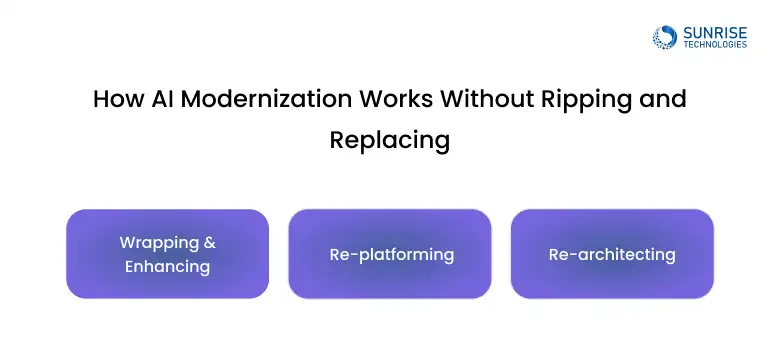
a. Wrapping & Enhancing
AI modules can “wrap” around existing software to add new capabilities without touching the core code. Examples include:
- AI chatbots for customer support integrated with a legacy CRM.
- Predictive dashboards for sales or inventory data.
b. Re-platforming
Move the legacy system to modern infrastructure (like cloud or microservices) while keeping business logic intact. AI capabilities can be added at this stage for workflow automation and analytics.
c. Re-architecting
A full redesign where AI is embedded into the new system architecture. Ideal for companies seeking maximum scalability, performance, and intelligence.
Discuss your legacy app, modernization goals, and AI integration opportunities with our expert developers. Walk away with actionable insights for your business.
Is Adding AI to Legacy Software Worth the Investment?
Yes, if done strategically.
AI modernization brings measurable ROI:
- Reduced manual labor and operational costs
- Faster decision-making and reporting
- Improved customer experience and engagement
- Scalable systems that grow with the business
For example, a logistics company in Melbourne upgraded its legacy delivery software with AI route optimization. The investment paid off in fewer late deliveries, reduced fuel costs, and happier customers—without replacing the entire system.
The First Step: Connecting AI Tools With a Decades-Old System
Before jumping in, businesses must assess their current infrastructure:
- Identify bottlenecks and pain points in workflows.
- Map out data sources, storage, and compatibility.
- Determine the AI goals—automation, predictive analytics, personalization, or reporting.
- Choose an AI-powered app development company that specializes in legacy software integration.
At Sunrise Technologies, we start by conducting an in-depth legacy system audit to determine how AI can be embedded without disrupting operations. This ensures a smooth, risk-free modernization journey.
Challenges of Adding AI to Outdated CRMs or Databases
AI integration isn’t always plug-and-play. Common challenges include:
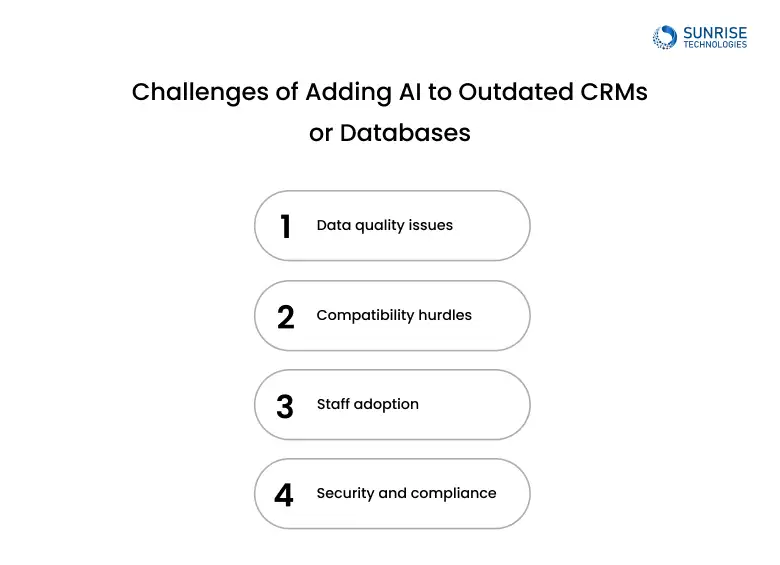
- Data quality issues: Historical records may be incomplete or inconsistent.
- Compatibility hurdles: Legacy databases may not support modern APIs or AI frameworks.
- Staff adoption: Teams may need training to leverage AI insights effectively.
- Security and compliance: Australian businesses must ensure AI integration adheres to privacy standards like the Privacy Act 1988.
However, these challenges are manageable with expert guidance. Sunrise Technologies specializes in AI workflow automation for legacy apps, helping businesses overcome these hurdles while improving system efficiency.
Upgrade your legacy system with AI and mobile modernization services, and we’ll handle post-launch maintenance for 8 weeks—free. Focus on growth while we ensure smooth performance.
Real-Time Examples of AI Modernization in Action
1. Healthcare Clinic
- Problem: Manual patient scheduling and outdated database.
- Solution: AI predictive analytics forecast patient flow, and automated reminders reduce no-shows.
- Result: 30% increase in operational efficiency.
2. Manufacturing Firm
- Problem: Legacy ERP couldn’t predict maintenance needs.
- Solution: AI-powered predictive maintenance module integrated with existing ERP.
- Result: 25% reduction in downtime and cost savings.
3. Logistics Company
- Problem: Delivery delays and inefficient routing from old software.
- Solution: AI optimization for routes and real-time tracking through a mobile app.
- Result: Faster deliveries, reduced fuel costs, and improved customer satisfaction.
8 Steps to Modernize Legacy Systems With AI
Integrating AI into a legacy system isn’t just about plugging in a tool—it’s a strategic, multi-step process. Here’s a detailed roadmap for Australian businesses looking to modernize without ripping and replacing:
Step 1: Conduct a Legacy System Audit
- Assess infrastructure: Identify software architecture, databases, APIs, and dependencies.
- Evaluate pain points: Where are workflows slow, error-prone, or manual-heavy?
- Prioritize AI opportunities: Determine which tasks can benefit most from automation, predictive analytics, or AI-driven insights.
Step 2: Define Clear AI Objectives
Decide the purpose of AI integration:
- Automate repetitive tasks
- Improve data accuracy and reporting
- Enable predictive analytics for business decisions
- Enhance user experience with AI-powered interfaces
Clear objectives ensure AI implementation delivers measurable value.
Step 3: Prepare Your Data
Legacy systems often contain incomplete, inconsistent, or siloed data. Clean, standardize, and structure the data to ensure AI can process it effectively. Consider data migration or mapping strategies if integrating with multiple sources.
Step 4: Select AI Tools & Integration Method
Decide whether to use pre-built AI modules, custom AI agents, or a hybrid approach.
Choose integration methods:
- API-based integration for minimal disruption
- Middleware solutions to connect legacy systems with AI platforms
- Microservices or containerization for more scalable modernization
Step 5: Develop Proof of Concept (PoC)
Test AI in a controlled environment before full-scale deployment. Validate performance, accuracy, and compatibility with legacy systems. Adjust AI workflows based on real-time results and feedback.
Step 6: Implement AI Workflows Incrementally
Roll out AI in stages to minimize disruption:
- Start with non-critical workflows (e.g., reporting, notifications).
- Gradually extend AI to core operations (e.g., inventory, billing, customer support).
Continuous monitoring ensures smooth adoption.
Step 7: Train Teams & Ensure Adoption
Provide training for staff on new AI-powered processes. Encourage feedback to refine AI workflows for maximum efficiency.
Step 8: Monitor, Optimize, & Scale
- Track KPIs: error reduction, time saved, cost efficiency, user satisfaction.
- Continuously refine AI models for better predictions, accuracy, and workflow automation.
- Scale AI capabilities across departments and integrate additional modules as needed.
Get a free assessment of your existing system’s compatibility with AI-powered solutions. Identify opportunities for workflow automation, predictive analytics, and smarter operations.
Why Sunrise Technologies is the Go-To Partner for AI Modernization
At Sunrise Technologies, we specialize in AI-powered app development and legacy system modernization for Australian businesses. Here’s what sets us apart:
- Comprehensive services: From legacy ERP and CRM upgrades to AI workflow automation and predictive analytics.
- Custom AI solutions: Tailored AI agents, chatbots, and analytics modules that integrate seamlessly.
- Mobile and web modernization: Ensure accessibility for employees, managers, and customers.
- Industry experience: Healthcare, logistics, manufacturing, finance, and more.
- End-to-end support: From system audit, AI integration, to continuous monitoring and optimization.
We help businesses unlock the true value of their legacy systems while future-proofing operations with AI. With Sunrise, modernization is strategic, secure, and scalable —not a disruptive gamble.
Final Thoughts
Legacy systems don’t need to hold you back. With strategic AI integration, businesses can:
- Enhance workflow
- Gain predictive insights
- Automate repetitive tasks
- Modernize without ripping and replacing
The first step is understanding your system, defining AI goals, and partnering with experts like Sunrise Technologies, who specialize in custom AI app development, workflow automation, and enterprise modernization. Modernization isn’t just about keeping up—it’s about gaining a competitive edge, reducing operational costs, and unlocking growth opportunities.
Yes. AI solutions can be designed with on-premise processing, encrypted data pipelines, and anonymization techniques, ensuring sensitive information remains secure while still enabling predictive analytics, workflow automation, and intelligent reporting.
ROI is assessed through time saved on repetitive tasks, reduction in errors, faster decision-making, and increased revenue opportunities. AI-powered dashboards can track performance in real-time, showing tangible business outcomes before and after modernization.
Absolutely. By integrating AI modules that process data streams in real-time, legacy systems can predict trends, optimize workflows, and automate responses, even if the core architecture remains unchanged.
Commonly used AI models include predictive analytics, anomaly detection, recommendation engines, and natural language processing. The choice depends on business goals—e.g., predictive maintenance for manufacturing or AI-driven customer support in service apps.
AI can monitor legacy system health, detect anomalies, and trigger alerts before failures occur. For example, predictive analytics can anticipate server or database overload, preventing downtime without replacing core systems.
Yes. Modern AI platforms support modular integration, allowing multiple AI agents—such as chatbots, predictive analytics, and automation engines—to work concurrently. This layered approach adds intelligence without disrupting existing workflows.
AI can automatically check workflows, flag compliance risks, and generate audit-ready reports. For Australian businesses, this includes Privacy Act 1988 compliance, GDPR-style reporting, and industry-specific standards.
Future-proofing involves scalable AI architecture, continuous model retraining, and modular integration, enabling businesses to add new AI capabilities or connect emerging technologies without redoing the system.
Yes. AI can enhance legacy apps with personalized dashboards, smart recommendations, AI-powered chat interfaces, and workflow suggestions, all without a full system replacement, giving users a modern, intuitive experience.
On-premise AI offers data security and low latency, ideal for sensitive operations, while cloud AI provides scalability, advanced analytics, and continuous updates. A hybrid approach is often best for legacy modernization projects.
Sam is a chartered professional engineer with over 15 years of extensive experience in the software technology space. Over the years, Sam has held the position of Chief Technology Consultant for tech companies both in Australia and abroad before establishing his own software consulting firm in Sydney, Australia. In his current role, he manages a large team of developers and engineers across Australia and internationally, dedicated to delivering the best in software technology.
